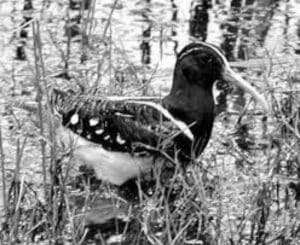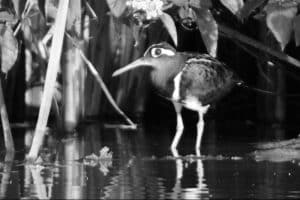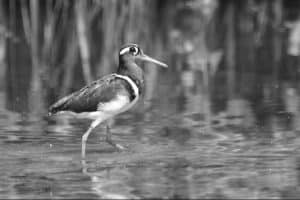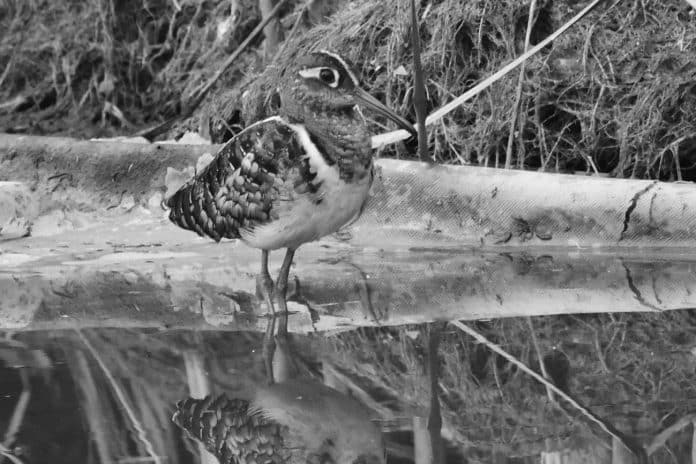Introduction to Painted-Snipes
Tanzania is a country blessed with incredible biodiversity, and among its avian treasures are the beautiful and enigmatic painted-snipes. These small wading birds, known for their stunning plumage and elusive behavior, are a delight for birdwatchers and nature enthusiasts alike. In this article, we will take you on a captivating journey through the wetlands and marshes of Tanzania, where painted-snipes in Tanzania can be found. Discover their habitat, behavior, conservation status, and the best locations for observing them.
Habitat and Distribution of Painted-Snipes in Tanzania

Painted-snipes in Tanzania are predominantly found in wetlands and marshes, where they thrive in the lush vegetation and shallow waters. These habitats provide an abundance of food, including insects, crustaceans, and small fish, which the painted-snipes feed on. The distribution of painted-snipes in Tanzania is primarily in the eastern and southern parts of the country, with key locations including the Selous Game Reserve, Mikumi National Park, and the Rufiji Delta. These areas offer a perfect blend of wetland ecosystems, making them ideal for the painted-snipes’ survival.
Behavior and Characteristics of Painted-Snipes
Painted-snipes are known for their unique behavior and striking physical features. These birds have a cryptic plumage, with intricate patterns of black, white, and chestnut, providing excellent camouflage in their wetland habitats. The males and females display slight variations in their appearance, with the males exhibiting more vibrant colors during the breeding season. Painted-snipes are primarily crepuscular and nocturnal, which means they are most active during the early morning and late evening hours. They have a distinctive feeding technique, using their long bills to probe the mud and shallow water for prey. Despite their small size, painted-snipes are skilled fliers and can cover significant distances during migration.
Conservation Status of Painted-Snipes in Tanzania
The conservation status of painted-snipes in Tanzania is a matter of concern. These magnificent birds face numerous threats, including habitat loss, pollution, and disturbance from human activities. Wetland degradation, mainly due to agricultural expansion and urbanization, has resulted in the loss of crucial nesting and foraging grounds for painted-snipes. Additionally, climate change poses a significant risk, as rising temperatures and altered rainfall patterns can disrupt the delicate balance of wetland ecosystems. It is essential to raise awareness about the conservation needs of painted-snipes and work towards protecting their habitats to ensure their long-term survival in Tanzania.
Best Locations for Observing Painted-Snipes in Tanzania

If you are an avid birdwatcher or simply a nature lover, Tanzania offers some incredible locations for observing painted-snipes in their natural habitat. The Selous Game Reserve, located in the southern part of the country, is a prime spot for encountering these elusive birds. Its vast wetlands and marshes provide an ideal setting for painted-snipes, along with an array of other bird species. Mikumi National Park, known for its diverse wildlife, including painted-snipes, is another excellent destination. The Rufiji Delta, with its intricate network of rivers and wetlands, is a haven for birdwatchers and offers an excellent chance to spot painted-snipes. Remember to respect the wildlife and follow responsible birdwatching practices while visiting these locations.
Tips for Spotting Painted-Snipes in the Wetlands and Marshes
Spotting painted-snipes in the wetlands and marshes can be a challenging task, given their secretive nature. However, with some patience and the right approach, you can increase your chances of a successful sighting. Firstly, it is essential to visit the wetlands during the early morning or late evening when painted-snipes are most active. Look for areas with dense vegetation and shallow water, as these are favored by the birds. Slowly scan the surroundings using binoculars, focusing on any movement or slight disturbances in the water. Be mindful of your movements, as any sudden noises or gestures can startle the painted-snipes and make them retreat into hiding. Remember, observing these birds from a distance is crucial to avoid causing them stress or disturbance.
Other Bird Species to Look Out For While Observing Painted-Snipes
While searching for painted-snipes, it is worth keeping an eye out for other fascinating bird species that share their wetland habitats. Tanzania is home to a remarkable diversity of avian life, and you may encounter species such as the African Jacana, Malachite Kingfisher, and Black Heron. The wetlands and marshes provide essential feeding and breeding grounds for these birds, making them a spectacle to behold. Take the time to appreciate the vibrant colors, intricate behaviors, and unique calls of these feathered inhabitants. Remember to bring a field guide or use a bird identification app to enhance your birdwatching experience.
Responsible Birdwatching Practices in Tanzania

As visitors to the wetlands and marshes of Tanzania, it is our responsibility to ensure the well-being of the wildlife we encounter, including painted-snipes. When engaging in birdwatching activities, always prioritize the welfare of the birds and their habitats. Follow designated paths and trails to minimize disturbance to nesting sites and avoid trampling on fragile vegetation. Keep noise levels to a minimum, as loud sounds can disrupt the natural behavior of the birds. Refrain from feeding or approaching the birds too closely, as this can disrupt their feeding patterns and cause unnecessary stress. By practicing responsible birdwatching, we can contribute to the long-term conservation of these precious avian species.
Photography Tips for Capturing Painted-Snipes in Their Natural Habitat
Photographing painted-snipes in their natural habitat can be a rewarding experience, allowing you to capture their beauty and document their behavior. To increase your chances of capturing stunning images, consider the following tips. Firstly, invest in a telephoto lens with a focal length of at least 300mm to get close-up shots without disturbing the birds. Use a tripod or monopod to stabilize your camera and minimize camera shake. Set your camera to a fast shutter speed to freeze any sudden movements of the painted-snipes. Be patient and observant, waiting for the perfect moment to capture the birds in action. Finally, always prioritize the welfare of the birds over getting the perfect shot. Do not approach too closely or disturb their natural behavior for the sake of a photograph.
Conclusion: Reflecting on the Beauty and Importance of Painted-Snipes in Tanzania
The painted-snipes of Tanzania are not only a visual delight but also serve as important indicators of the health of wetland ecosystems. These birds play a crucial role in controlling insect populations and maintaining the delicate balance of their habitats. By exploring the wetlands and marshes of Tanzania in search of painted-snipes, we not only get to witness their beauty firsthand but also gain a deeper appreciation for the importance of conserving these fragile ecosystems. Let us embrace responsible birdwatching practices, contribute to conservation efforts, and ensure that future generations can continue to marvel at the wonders of painted-snipes in Tanzania.


































